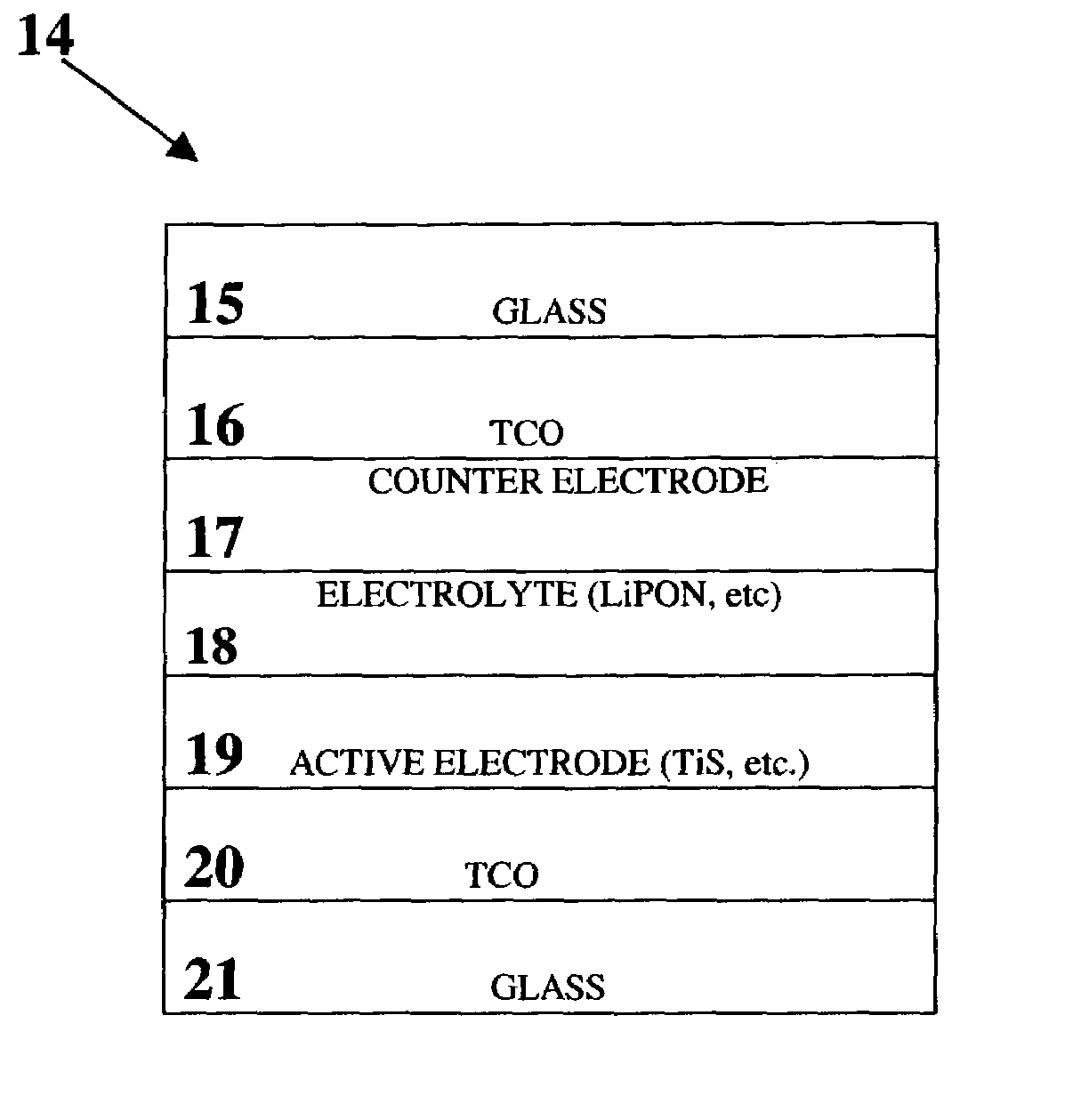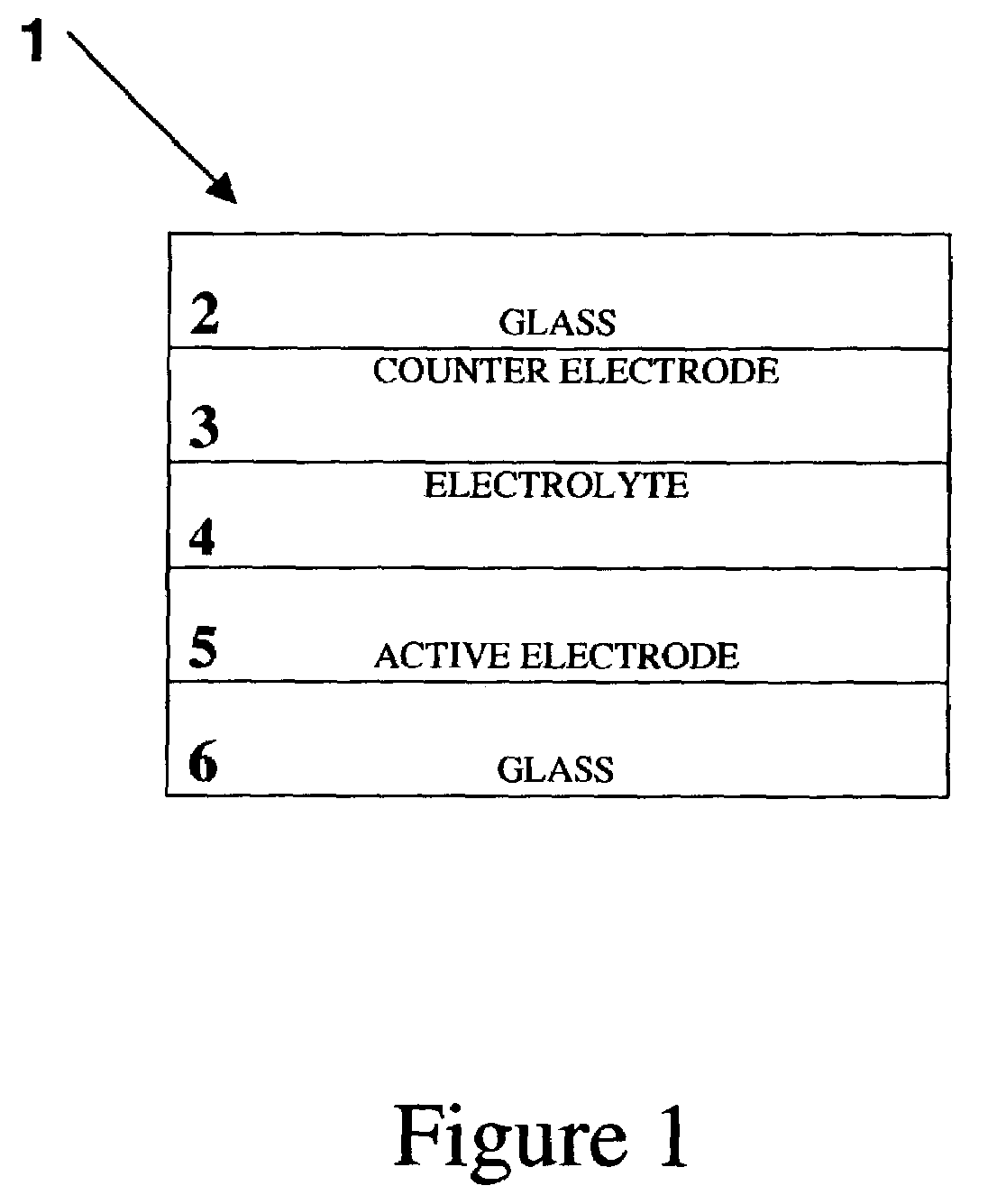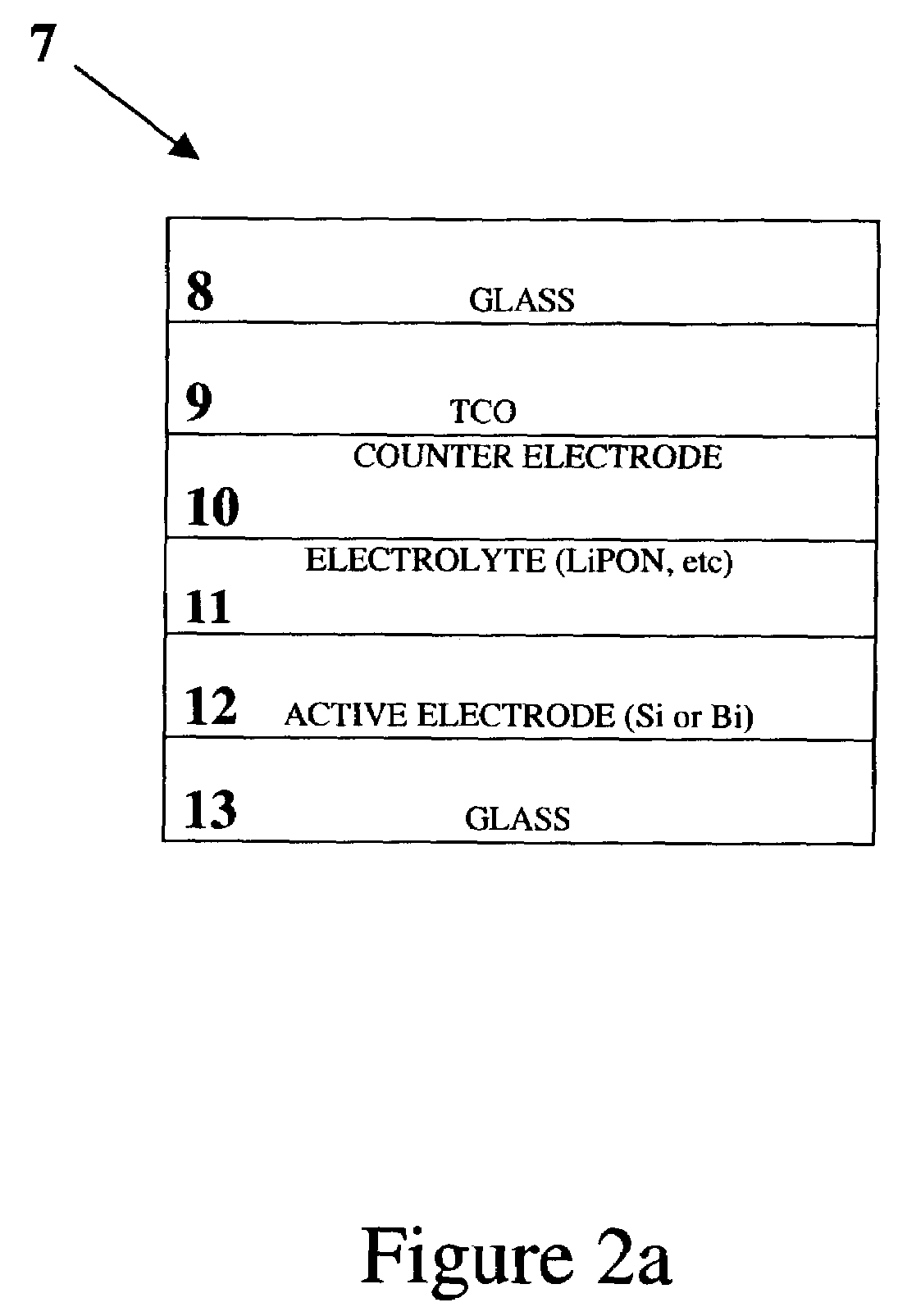Electrochromic devices based on lithium insertion
a technology of electrochromic devices and lithium ion batteries, applied in non-linear optics, instruments, optics, etc., can solve the problems of poor cycle life, inability to achieve, and difficulty in long-term use,
- Summary
- Abstract
- Description
- Claims
- Application Information
AI Technical Summary
Benefits of technology
Problems solved by technology
Method used
Image
Examples
example 1
[0048]Antimony and bismuth lithium compositions were deposited on glass substrates by evaporation of the metals in a vacuum coater. Film thicknesses were measured by profilometry (Dektak). Electrochemical cycling was carried out in a 50 mL fused silica cuvette containing 1 M LiClO4 in propylene carbonate, using lithium foil counter and reference electrodes. Photopic transmittance was monitored in situ using a filtered silicon detector (International Light, Inc.) with output coupled to a computerized potentiostat / galvanostat (Arbin, Inc.). Visible spectra were recorded using a fiber optic spectrometer (Ocean Optics, Inc.). X-ray diffraction (XRD) patterns of films as deposited and after cycling were obtained using a Siemens thin film diffractometer with an incident beam angle of 0.5° from the sample surface.
[0049]The potential of a fresh antimony film is about 2.5 V vs. Li due to the presence of a small amount of oxide. As lithium is taken up, the potential drops rapidly to a plateau...
example 2
[0052]Pure Sb, Cu—Sb, and Ag—Sb films were deposited on 25 mm×37 mm glass substrates by DC magnetron sputtering from separate 2″ diameter targets at 26° off normal, target to substrate distance: 90 mm. Film thicknesses (Table I) were measured by stylus profilometry (Dektak). Electrochemical cycling was carried out in a 50 mL fused silica cuvette containing 1 M LiClO4 in propylene carbonate, using lithium foil counter and reference electrodes. Photopic transmittance was monitored in situ using a filtered silicon detector (International Light, Inc.) with output coupled to a computerized potentiostat / galvanostat (Arbin, Inc.). Visible spectra were recorded using a fiber optic spectrometer (Ocean Optics, Inc.).
[0053]
TABLE IFilm Deposition Conditions and Thicknesses%%Sb PowerCu / Ag PowerDeposition TimeThicknessCuAg(W)(W)(s)(nm)002960202028570283332166431502324602512284602825271060205020226040
[0054]The visible reflectance of the mixed metal films was somewhat lower than that of pure Sb esp...
PUM
 Login to View More
Login to View More Abstract
Description
Claims
Application Information
 Login to View More
Login to View More - R&D
- Intellectual Property
- Life Sciences
- Materials
- Tech Scout
- Unparalleled Data Quality
- Higher Quality Content
- 60% Fewer Hallucinations
Browse by: Latest US Patents, China's latest patents, Technical Efficacy Thesaurus, Application Domain, Technology Topic, Popular Technical Reports.
© 2025 PatSnap. All rights reserved.Legal|Privacy policy|Modern Slavery Act Transparency Statement|Sitemap|About US| Contact US: help@patsnap.com



